 Home
Gallery
Contact
Events & Projects
Projects: 2019 On
Film & TV
Archive & Links
Home
Gallery
Contact
Events & Projects
Projects: 2019 On
Film & TV
Archive & Links
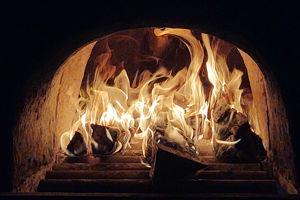
 Home
Gallery
Contact
Events & Projects
Projects: 2019 On
Film & TV
Archive & Links
Home
Gallery
Contact
Events & Projects
Projects: 2019 On
Film & TV
Archive & Links
|

|
2021 Furnace ('Phoenix') and Lehr at Quarley - 'Phoenix' Firing Two - Furnace Performance and Lehr
Projects: 2019 Onwards
Woodshed Build
The Woodpile
IFoG Furnace Removal
Firepit Reconstruction
Furnace Superstructure Build
Phoenix Firing One
Repairs after Firing One
Phoenix Firing Two
Repairs after Firing Two
------------------------------------------------
Furnace Performance and Lehr Pots, Collars and Breakages Glassblowing
|
Furnace Performance
Fuel Use
To fire the furnace to an average working temperature of 1024°C, we used 1610 kilos (1.61 tonnes) of wood over ten days, at an average rate of 14.37 kilos per hour, or 161.0 kilos for each average 11.24 hour firing day. With the stoke hole inlet unblocked, we burnt 18.43 kg/hr of Opepe over one day, at an average temperature of 1014°C. With the lower stoke hole inlet blocked, we burnt an average of 12.54 kg/hr of Opepe over four days, at an average temperature of 1029°C . With the lower stoke hole inlet blocked and the upper stoke hole inlet partially blocked, we burnt 12.51 kg/hr of Opepe over three days, at an average temperature of 1027°C. This shows the value of regulating the air supply. Over the ten-day firing, we mainly kept the temperatures below 1050°C - this was substantially exceeded only once in order to help to refine the coloured glass cullet that we had in at the time. To fire the furnace up to 1000°C, we used mixed wood species, and for glassblowing, we used Sycamore for the first three days, replacing this with Opepe for the rest of the firing.
Furnace Design and Firing
During the firing, new vertical and horizontal cracks appeared in the inner wall: a few smaller ones on and near the ceiling, and larger ones at and below the shelf level. They appeared to exploit weak points associated with the holes for the shelf supports and were caused by the wall not being able to move inwards as it shrank. The cracks on the outer wall also grew and multiplied, but none appeared serious enough to threaten the integrity of the furnace. Over the ten days, the firing chamber floor became peppered with solidified lumps of glass which dripped from the shelves and combined with ash whilst molten, and which will be difficult to remove. For clearer photos of the damage to the interior of the furnace, see the section on the Repairs after Firing Two. The slot between the shelves allowed all of the waste gases into the melting chamber with no problems, and we experienced very little - if any at all - burnback. The shelves themselves were successful, neither cracking nor moving, although two of the small brackets for the support bars broke away. The shelves suffered from glass spillage, and the ceramic fibre cloth offered very little protection. The four top holes were useful, but did spend much of their time closed or partly-closed to preserve heat for the gathering holes. The hotter area tended to be at the rear of the furnace. The stoke hole and tunnel did not need to be lengthened, with Steve concentrating the burn at the very end of the tunnel. Excess air was reduced by stopping up the lower inlet (below the grate). This lessened the attack on the glass and lowered the rate of fuel consumption. Stopping the upper air inlet and stoking hole also lowered the excess air and perhaps lessened the glass attack even more. More work needs to be done on controlling the amount of air and reducing the amount of wood burnt - something we address in Firing Three.
Glass, Glass Attack and the Lehr:
The glass all went into the lehr in what appeared to be a fire-polished state, but many had a slght bloom on them the next morning. Those which had not been reheated in the furnace (mould-blown beakers) had no bloom or surface attack. Those which had minimal reheating had only the slightest mistiness, if any. The goblets we made each day all had a slight bloom, but this decreased during the firing - connected to the blocking-off of the air inlets. We allowed one goblet to cool down out of the lehr. Although shiny when finished, one could feel a slight resistance when rubbing the outer wall of the goblet when it had cooled, and there was a slight bloom. It seems that the time in the lehr does not add to the bloom effect. It does appear that the glass attack occurs in the furnace, with the excess air reacting with the sulphur to produce sulphuric acid, which attacks the glass. This attack may be developed in the lehr, but does appear to be present even on unannealed vessels purposely left to cool down naturally. So, the less wood burned and the less air in the melting chamber, and the less the length of time spent reheating the vessel, the less the glass attack. |
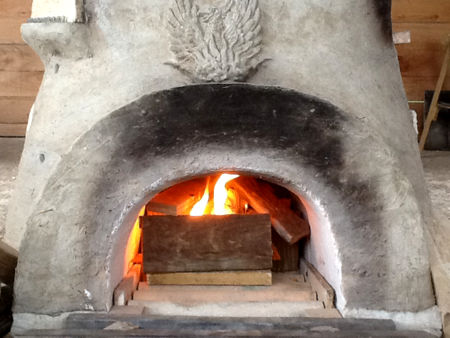
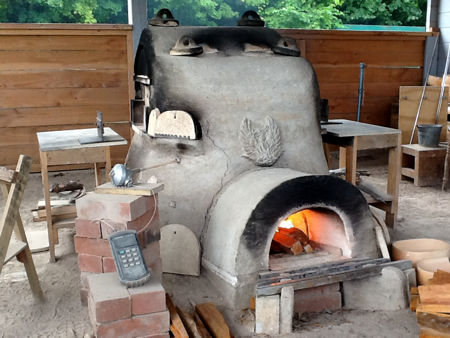
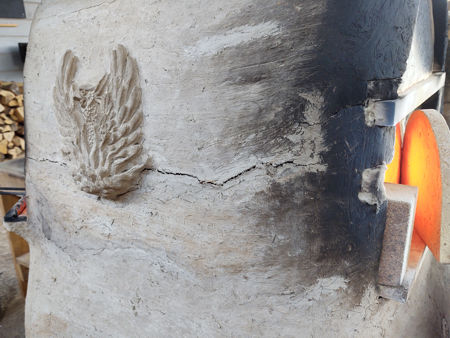
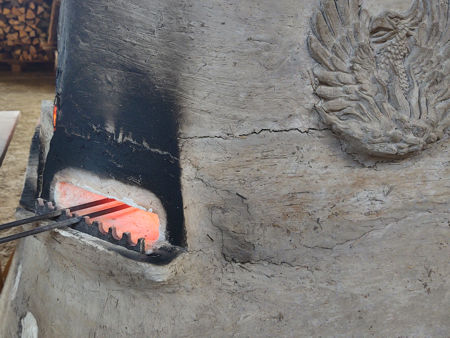
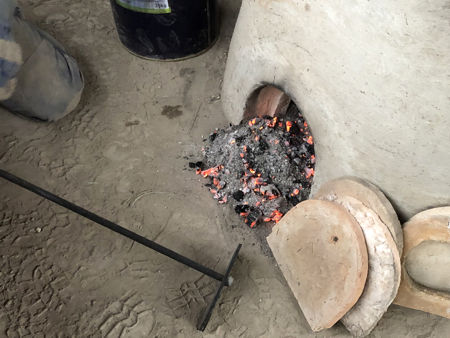
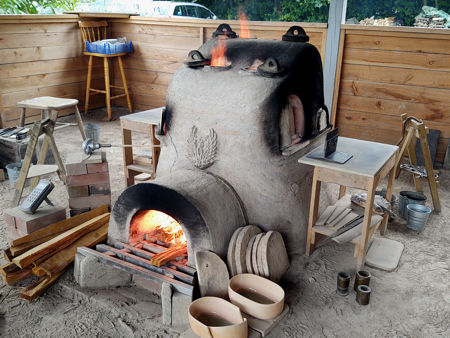
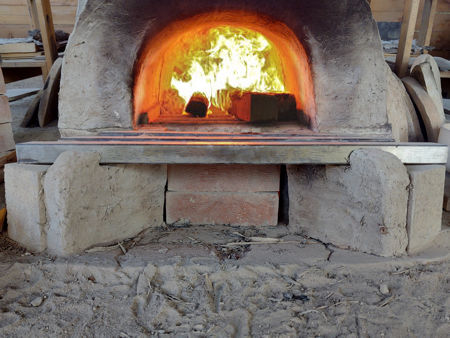

|
|
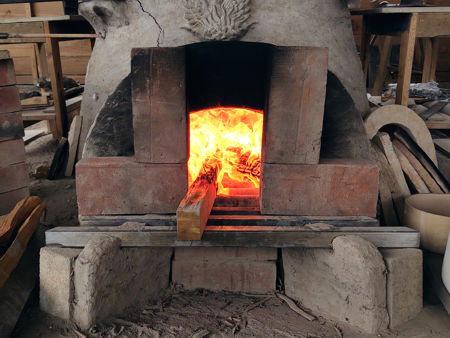
|
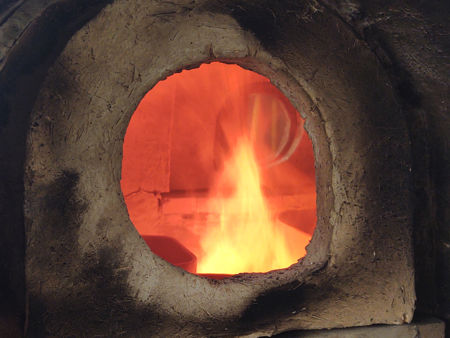
|
|
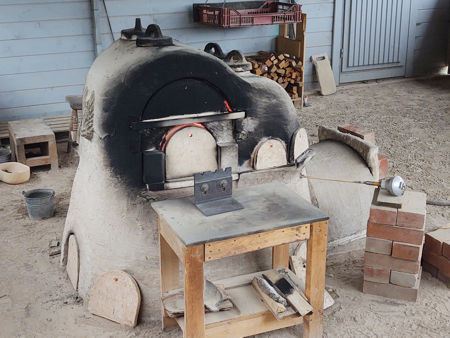
|
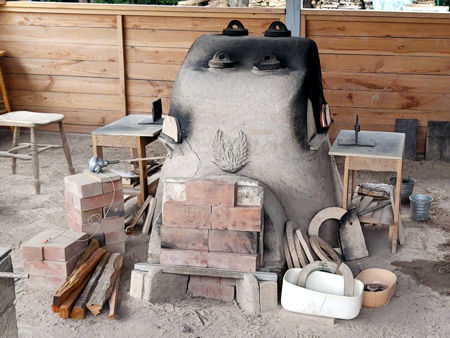
|
|
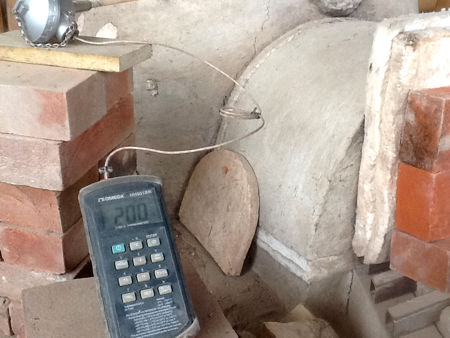
|
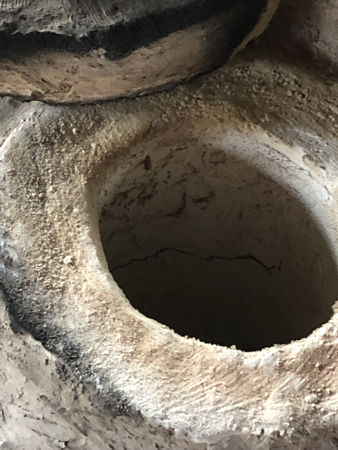
|
|
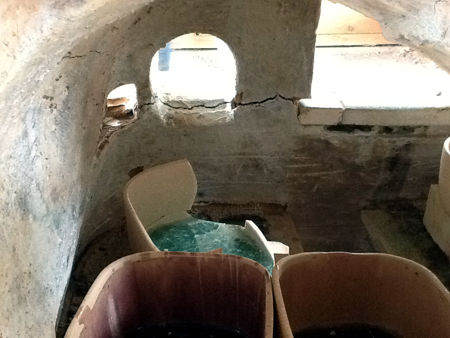
|
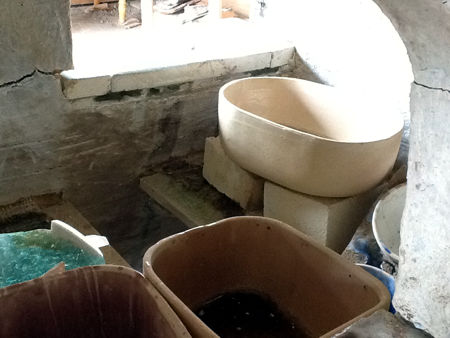
|
|
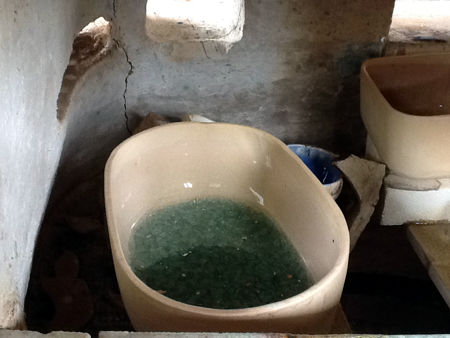
|
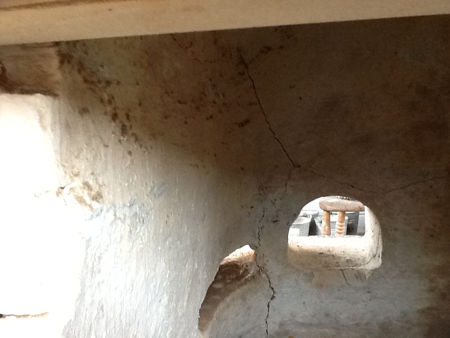
|
|
Lehr
We had no problems in firing the lehr, and as discussed above, the lehr does not appear to contribute towards the bloom on the surfaces of the glass vessels. Following the success of closing down the air intakes on the furnace, in Firing Three we will try narrowing the lehr stoke hole to let in less air. (This will also cut down heat loss by radiation.) |
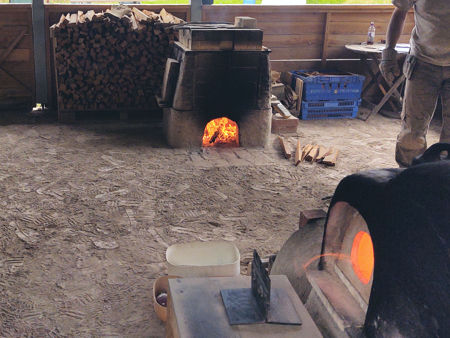
|
|
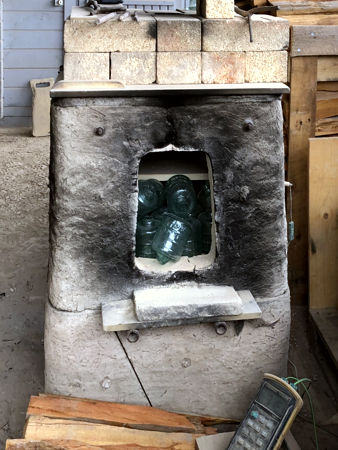
|
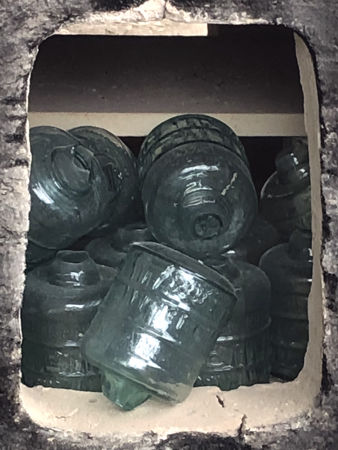
|
|
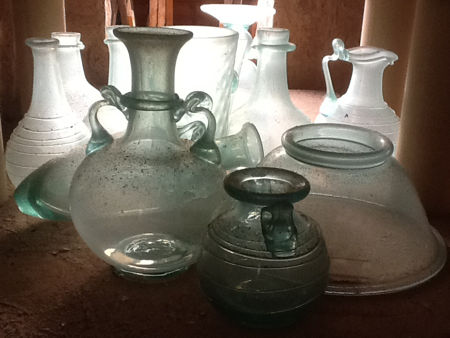
|
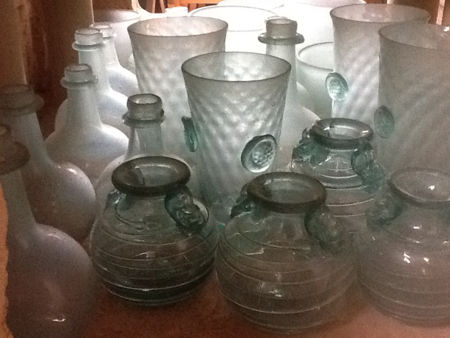
|
|
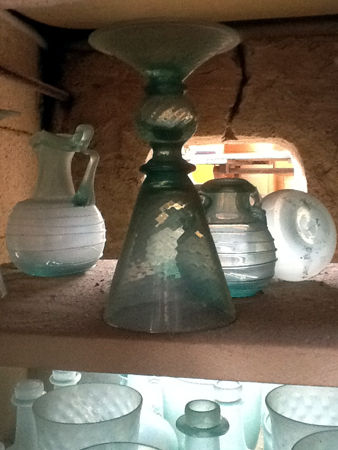
|
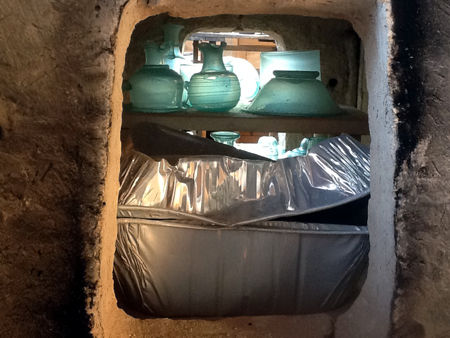
|
|
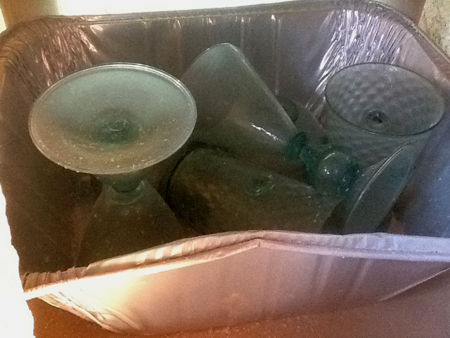
|
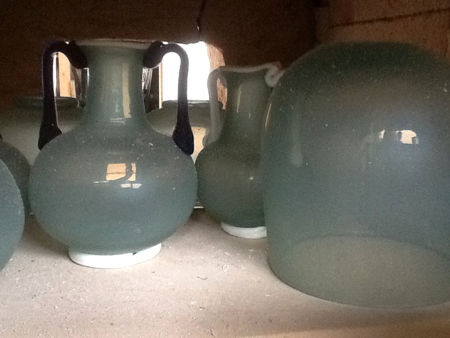
|
|
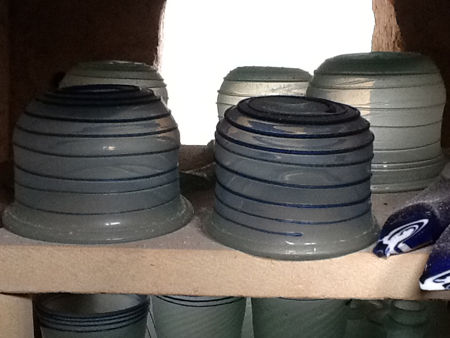
|
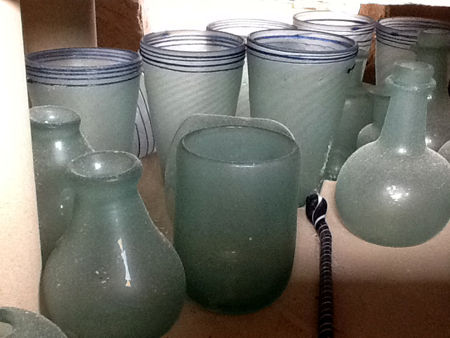
|
|
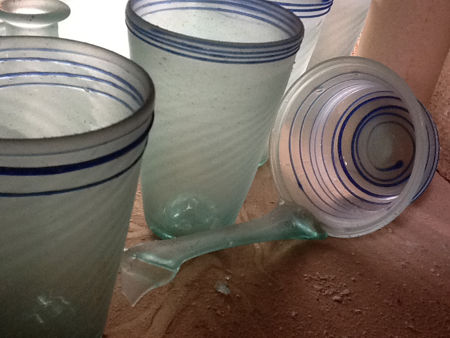
|
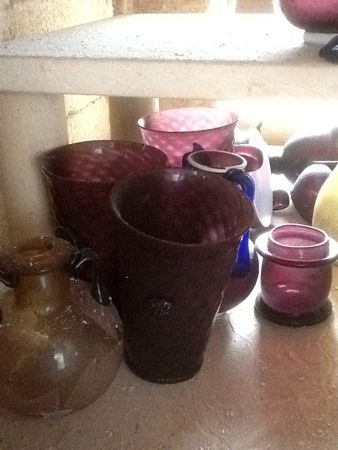
|
|
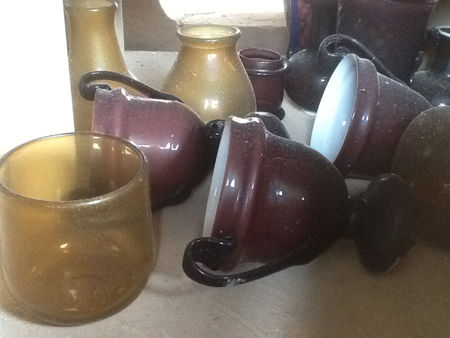
|
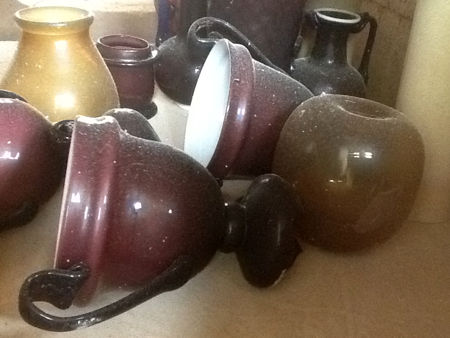
|
|
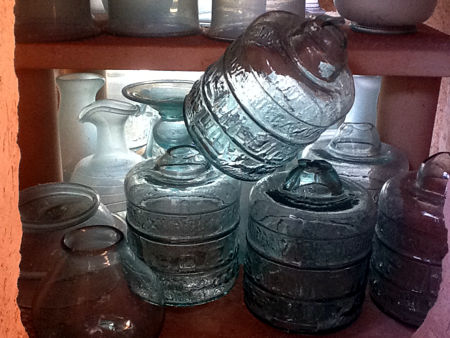
|
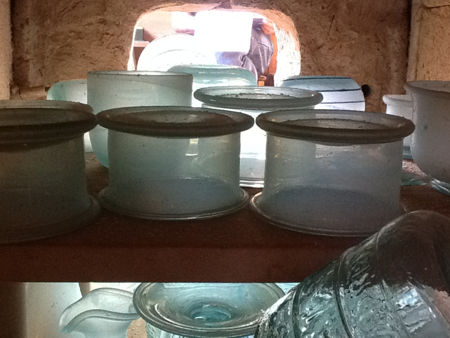
|
|
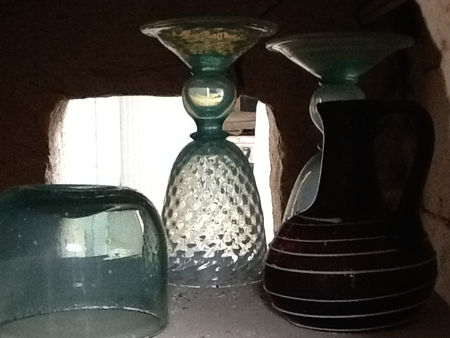
|
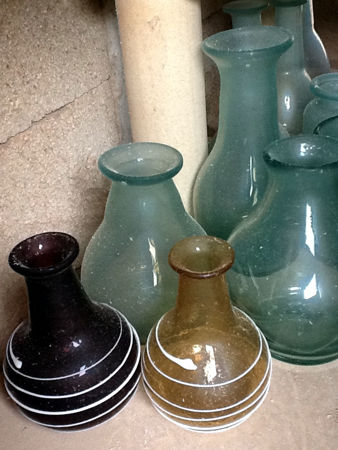
|
Home Gallery Contact Events & Projects Projects: 2019 Onwards Film & TV Archive & Links